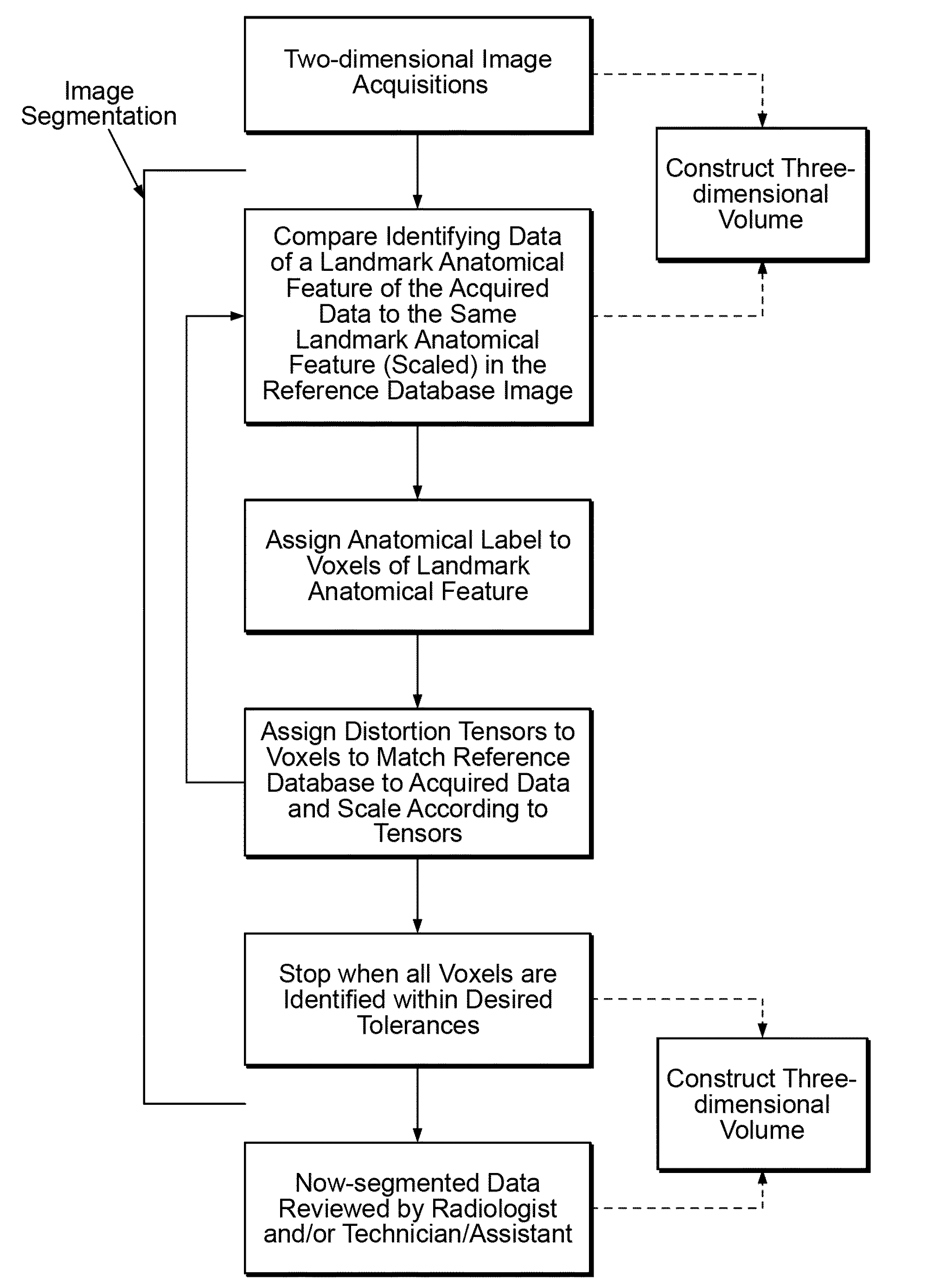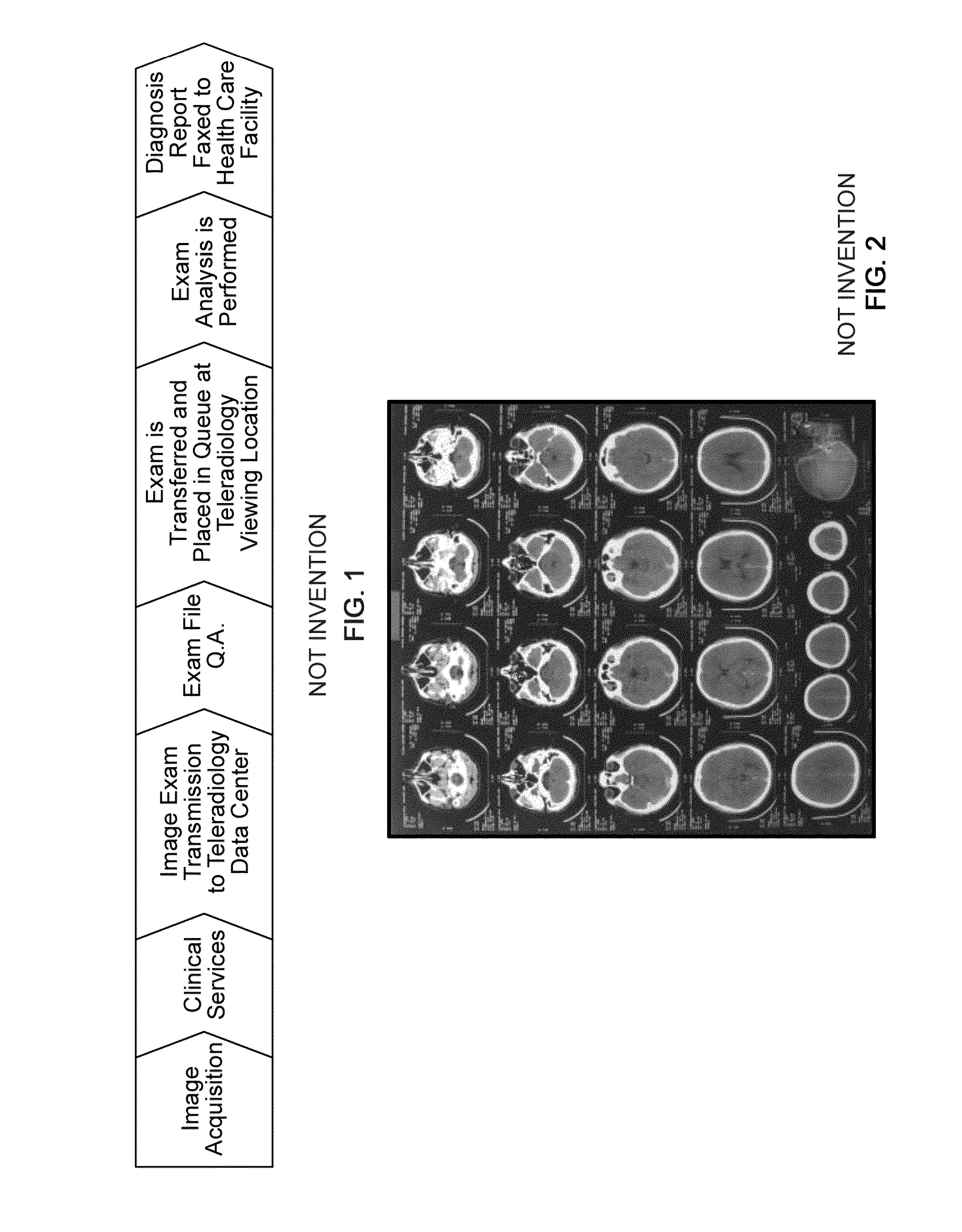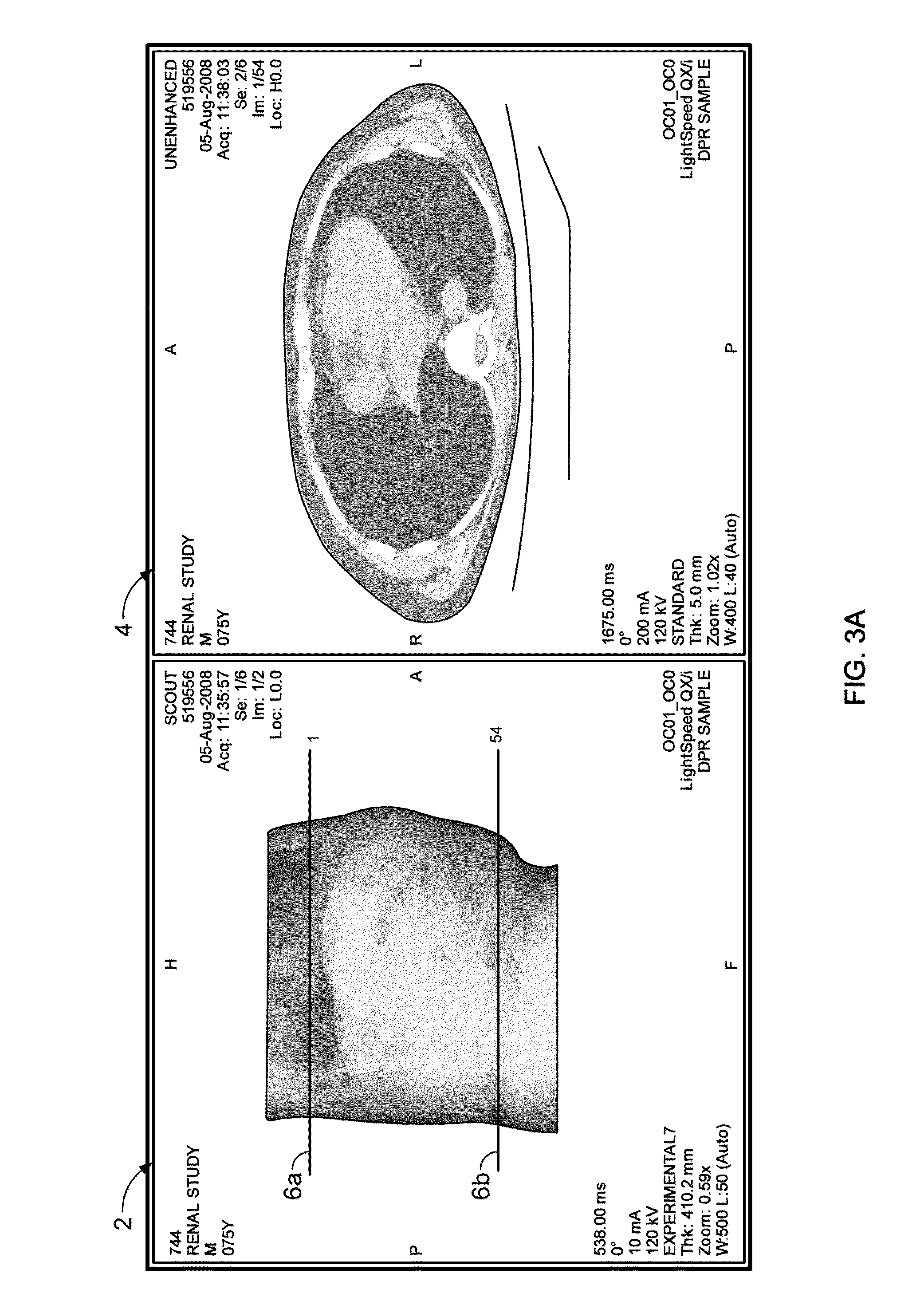Systems and methods for efficient imaging
a technology of efficient imaging and imaging data, applied in the field of analysis, processing, viewing, and transport of medical and surgical imaging information, can solve the problems of inefficient page method, radiologist time, and “homegrown” tools used for analyzing and processing imaging data
- Summary
- Abstract
- Description
- Claims
- Application Information
AI Technical Summary
Benefits of technology
Problems solved by technology
Method used
Image
Examples
Embodiment Construction
[0053]The systems and methods disclosed herein can be used to process information (e.g., examination data files containing radiological data sets) for medical and / or surgical imagining techniques used for diagnosis and / or therapy. The systems can be computer hardware having one or more processors (e.g., microprocessors) and software executed on computer hardware having one or more processors and the methods can be performed thereon. The systems can have multiple computers in communication (e.g., networked), for example including a client computer and a server computer.
[0054]The examination data files can contain radiological data, modality information, ordering physicians notes, reason / s for the examination, and combinations thereof. The radiological data can include a corpus of data from the radiological examination and processing of the data from the radiological examination. The corpus can include data that represents images (e.g., PACS images, multiplanar images), objects, datas...
PUM
 Login to View More
Login to View More Abstract
Description
Claims
Application Information
 Login to View More
Login to View More - R&D
- Intellectual Property
- Life Sciences
- Materials
- Tech Scout
- Unparalleled Data Quality
- Higher Quality Content
- 60% Fewer Hallucinations
Browse by: Latest US Patents, China's latest patents, Technical Efficacy Thesaurus, Application Domain, Technology Topic, Popular Technical Reports.
© 2025 PatSnap. All rights reserved.Legal|Privacy policy|Modern Slavery Act Transparency Statement|Sitemap|About US| Contact US: help@patsnap.com



